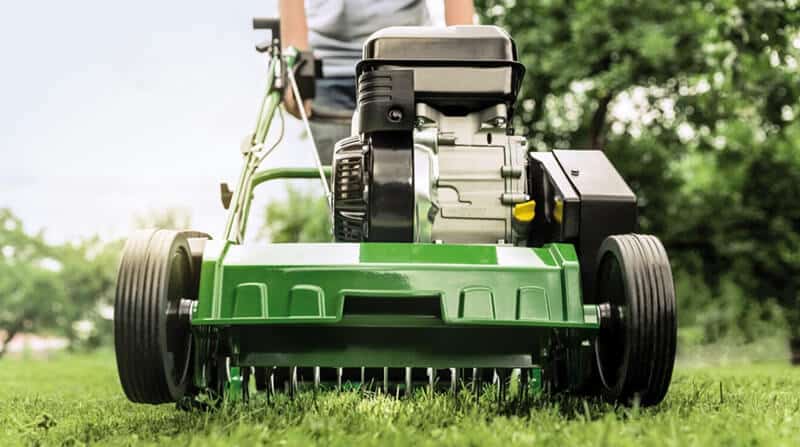If you’re new to lawn care you might have been told or you might have read somewhere that you need to scarify your lawn.
But what is scarifying and what does this rather technical term mean?
In this article, I’ll tell you what scarification is and why it’s an important part of caring for your lawn.
What is Scarifying?
Lawn scarification is the process of using tools or machines to mechanically remove and control the build-up of organic material in our lawns.
This organic matter is called lawn thatch.
It’s is made up of predominantly dead grass roots, shoots and runners. It resides in amongst the grass plants, just above the soil.
Why it’s Important to Scarify
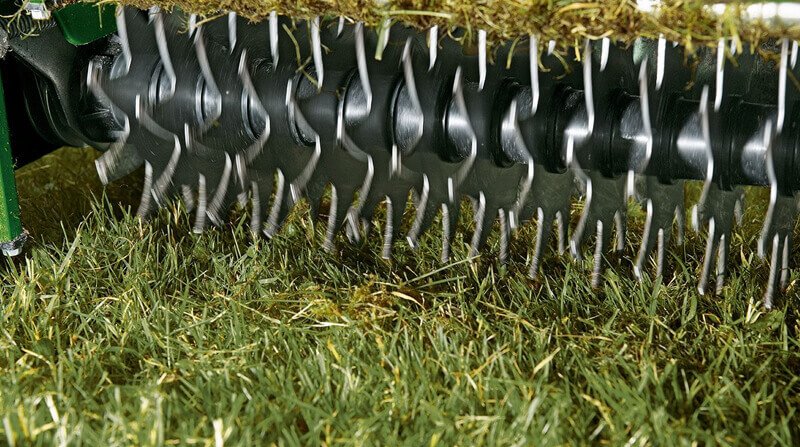
Having some thatch (a quarter of an inch) in your lawn is a good thing.
It protects the crowns of the grass plants from damage and disease. It also acts as a barrier that prevents the soil from losing moisture through evaporation. In the same way as applying mulch to your flower beds.
Three Problems Caused by Lawn Thatch
However, over time, thatch can accumulate to the point where it prohibits air, water and nutrients from being able to penetrate the soil.
This creates 3 problems;
It Causes Shallow Rooting of the Grass
Thatch acts as a sponge and soaks up all the surface water. It also retains any lawn feed or fertiliser you might apply.
As a result, instead of producing deep roots, the grass grows roots directly into the thatch layer where it can access any moisture, nutrients and air.
It Provides the Perfect Environment For Moss and Disease to Spore
Because lawn thatch soaks up and retains water, it creates ideal conditions in which moss can spore and lichens grow.
And moss isn’t the only problem.
Fungal disease can also spore in this environment. And because the grass roots into it, the disease attacks the grass and consumes it of its nutrients.
It Causes the Grass to Become Prone to Drought
During the summer heat, lawn thatch dries out rapidly and can have the same kind of texture as a dry Weetabix.
Because the grass rooted into the thatch which is now completely devoid of water and nutrients, it becomes prone to suffering from drought conditions.
When it gets hot, the grass dries out, turns brown and either goes dormant or dies.
Scarifying Fixes and Prevent These Issues
It removes this thatch and breathes new life into your lawn by allows those all-important air, water and nutrients back into the soil.
It also encourages new growth and promotes the breakdown of organic material. This, in turn, slows down its accumulation.
The result is a greener, denser, healthier sward.
Types of Scarification
The term ‘scarifying‘ means different things to different people and what their lawn care calendar looks like.
For example, some lawn owners scarify, or de-thatch and some rake and the two are often confused as the same thing.
In fact, there’s a difference between scarifying and raking, but you can use both procedures in the battle against lawn thatch.
Then there’s another procedure called vert-cutting which is also used to control thatch.
Let’s look at each method individually.
Scarifying or De-Thatching
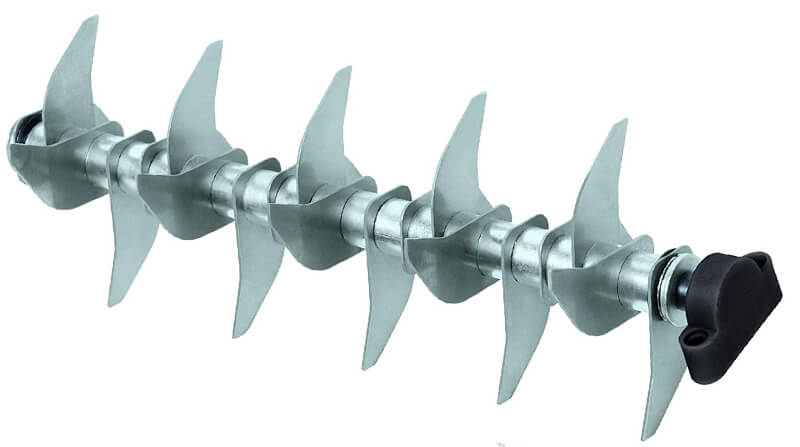
De-thatching is the harshest form of scarification and is used to remove built-up thatch from your lawn.
The vertical blades cut into the surface and rip out the thatch, thereby reducing the amount.
Because it can be quite a brutal treatment, it’s best to de-thatch in autumn for reasons which are explained here: When to Scarify (and When NOT to) For Best Results.
If you have an ornamental lawn full of bent, brown top and fescue grasses, you’ll probably de-thatch every year. This is because they naturally produce thatch due to the creeping way in which they grow.
On the other hand, if you have a family lawn which is full of ryegrass, you might only need to scarify once every 2-3 years because it grows tufts instead of creeping.
Raking
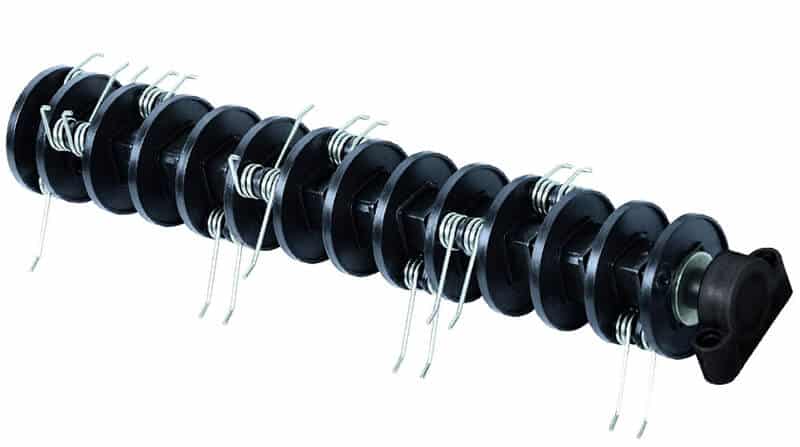
Raking uses spring tines and is more often than not associated with removing moss.
However, raking also removes the top layer of dead grass roots, shoots and foliage before it ever becomes thatch.
Raking is much gentler on your lawn than de-thatching so you can do right through the spring and autumn.
As such, it’s a very good way of preventing the build-up of thatch. The result is that you don’t have to de-thatch as often.
Verticutting
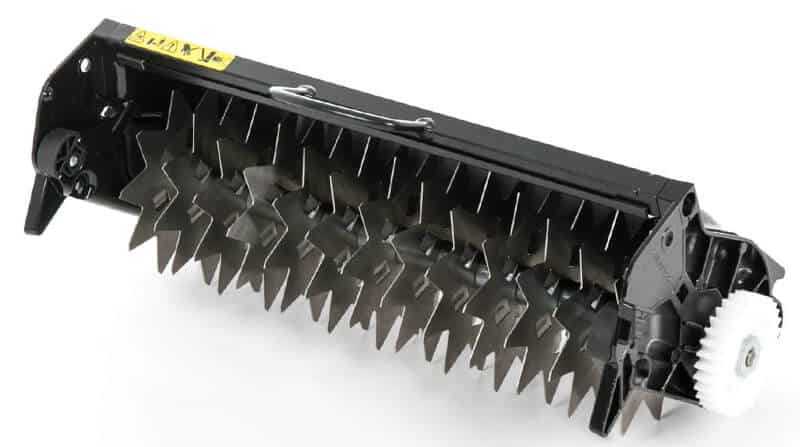
Verticutting is essentially vertical mowing.
It prunes the roots of the grass plants to stimulate new growth. At the same time, cutting into the thatch layer to remove the top layer and discouraging the growth of weed grasses like Poa Annua.
It’s very gentle on turf and as a result, you can do it every week or two from April through to September.
That said, verticutting is rarely considered a viable part of lawn care practice for homeowners. It’s more of a ‘professional’ way of controlling thatch and weed grasses in sports turf.
This is confirmed in the fact that there is only one standalone domestic verticutter that I know of on the market which is the Bosch AVR1100.
That said Allett also makes a verticutting cartridge for some of their homeowner range of lawn mowers.
Which is the Type of Scarification For You and Your Lawn?
Some people only use one type of scarification method, some use all of them. The type you choose to use all depends on;
- Your level of knowledge
- How much time you have
- How committed you are to lawn care
- The size and type of lawn you own
- Your budget
For Most Lawn Owners
To keep things as simple as possible, the best advice I can offer is at least rake your lawn every spring and every autumn. Ideally, you’d also scarify every year or two in the autumn.
This will improve the health and look of your lawn significantly.
If you have small lawns you can do it manually. You can rake with a springbok rake and scarify with a manual scarifier.
Doing it manually, however, even on small lawns is exhausting work and it’ll take a long time to do it thoroughly. Expect blistered hands and sore muscles.
There are several types of scarifier but to me, the quality lawn scarifiers are powered machines which have changeable cartridges. One for raking and another for de-thatching.
They allow you to do both jobs with the same machine, they remove all the manual labour and save hours of work.
If You Own an Ornamental Lawn
If you own and look after an ornamental lawn and you want perfection then your scarifying regime will be more intense.
Rake your lawn every spring and verticut it every fortnight week between April and September (weather depending). Then de-thatch every autumn.
In Conclusion
As you now know, scarification is an ongoing process used to remove lawn thatch and control its build-up.
And it’s important to remove and control thatch because its presence in your lawn can cause a whole raft of other problems.
Scarifying just twice a year will make a huge difference to the health and look of your lawn.
Read this article and learn how to scarify your lawn, step-by-step and try it. You’ll be amazed at the results.
Providing you know what to do after scarifying that is!
